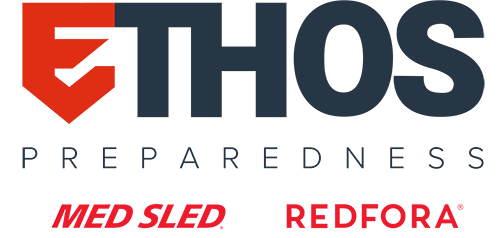It may be hard to remember after months of working from home or embracing remote-first work, but for decades the number one place you were likely to participate in an emergency drill of any kind as an adult was at the office.
It may have interrupted an important meeting or felt like an inconvenience, but they are are incredibly important because once you're out of school, we tend to not practice preparedness on our own. Why do we love earthquake drills? We'll let our Corporate Resilience & Engagement Manager, Steve Eberlein, tell you in a segment from his full article "Ode to the ShakeOut."
I love the awkwardness, I love people’s reluctance to participate, I love the slow domino effect of begrudging cooperation, I love the embarrassed laughter of people returning to their seats. I love everything about earthquake drills because, in that one minute of pretend shaking, we witness the power of our influence over one another. I will assume you hate drills, so let me lend you my eyes so that you might better enjoy the Great Shakeout.
There are two reasons that earthquake drills like the Great Shakeout are important. First, the nerdy reason: during an emergency, your frontal cortex (aka “your smart brain”) is overrun by your amygdala (aka “your dumb explosive brain”) due to a fear-driven process called “amygdala hijack.” Your amygdala only learn effectively through repeated, physical practice – so get under the damn table.
But there’s a second reason we must participate in earthquake drills that is never acknowledged: we need to do earthquake drills because they’re awkward.
I didn’t miss-word that. We don’t like to acknowledge that we need one another’s reinforcement to perform a life-preserving act. We don’t like to acknowledge that we need permission to do what’s smart. But permission is precisely what we’re looking for when taking action during a time of fear and uncertainty. When you run an earthquake drill, you are working to build a permission structure that will persuade everyone to do something awkward and potentially life-saving action together.
Steve goes on in the article (which you can read in full on the Redfora Blog!) to describe the categories folks fall into during an emergency, including the 'eye-rollers,' which is pretty self explanatory. It's really tempting to fall into this group, to not take it seriously, and even to actively rebel against it. While many eye-rollers are set in their ways, the one thing that can break them is seeing others take it seriously and practice. Sure, we all hope that emergencies are rare or never happen, but the reality is they do happen (and more frequently than ever in fact). This year if you find yourself dropping, covering, and holding on in an office environment, do your best to be the inspiration to change some of those eye-rollers into a true believer.
Not at the office? No problem! The Great ShakeOut is still for you, and if you're spending an extra 8 hours a day at home working there has never been a better time to practice your emergency plan with your entire family. We put together some tips to practice at home in a quick blog to reference. Maybe you took last year "off" from this annual event and we can't blame you, but take the initiative to get back into the swing of things this year. Your future self may thank you if those skills are necessary to save your life.
After the ShakeOut earthquake drill today or the next time your office practices a fire drill, be sure to thank your floor leader, Office Manager, Emergency Manager, or whoever is working with leadership to make sure emergency drills aren't forgotten. It may feel silly in the moment, but embrace the awkwardness, practice those skills to move them to the literal front of your mind, and be thankful there is a wealth of information on what to do during an earthquake to keep you safe!
Happy Great ShakeOut! Be sure to drop, cover, and hold on at 10:21 local time, joining over 60 million people worldwide doing the same thing today as part of the world's largest earthquake drill.

